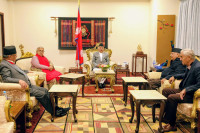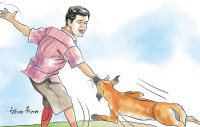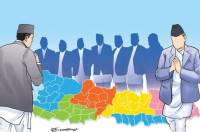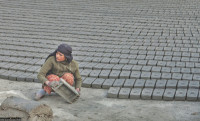Opinion
Dhangadi misadventure
It is fortunate that it had a happy ending, even if the act itself was unbecoming of proper airmanship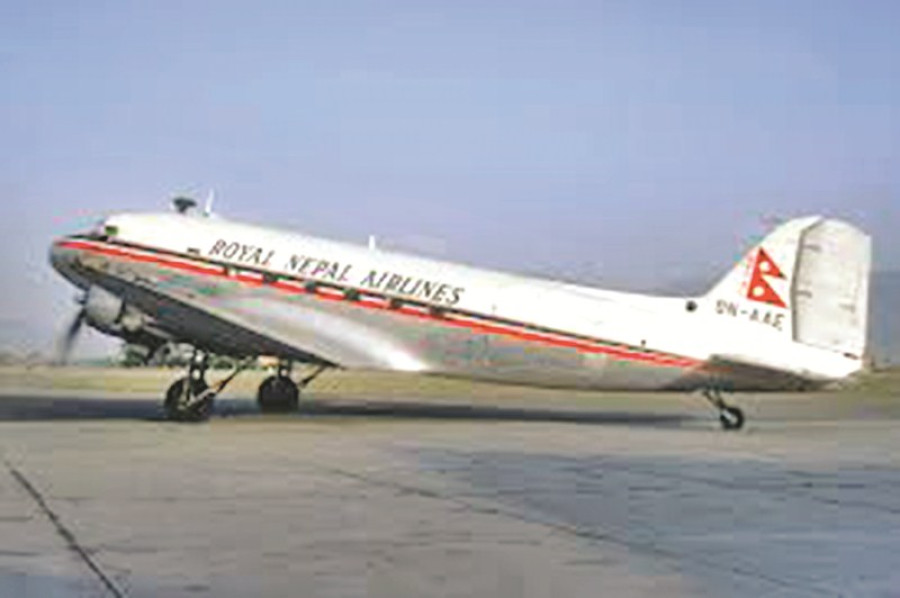
Save for aviation geeks, no one takes an interest in an unearthly-hour aircraft noise these days. Unlike at present, half of Kathmandu was on the terrace watching the B727 that was struck overhead with technical issues for hours around midnight in 1978. The then Royal Nepal Airlines Corporation (RA) had to lay down night flying procedures to get more productive hours out of the jets it owned. Flights were, otherwise, barred between sunset and sunrise hours.
Navigating in and out of Kathmandu became reliable with the installation of two pieces of navigational equipment near the Tribhuvan International Airport (TIA). In conjunction, they provided directional and distance reading on a continuous basis. The next thing that required fixing was to ascertain the safe approach altitude and the descent pattern minding the terrain obstacles. This was achieved by running several day time practice runs. The first B727 night time trail run was successfully conducted on 17 November 1977. It has, since then, become an integral part of all TIA arrivals and departures, not constrained by the blanket sunset norm. This piece aims to focus on events related to night time flights alone. But circumstances of early years have, sometimes, necessitated conducting flights, rightly or wrongly, even during periods beyond the permissible hours.
Historical incident
Back in 1974, it was strange to see the Army’s Skyvans heading west in a hurry at about four in the morning. The army was in a rush to capture Gey Wengdi, a person responsible for the Khampa uprising. The odd hour flight, in all probability, was carrying paratroopers to seal Wengdi’s escape route. He had outwitted the Army’s attempt to trap him earlier. He was ultimately felled at Tinkarlipu on September 15. Google Earth shows the location at near 30N/81E, less than 3km from the India “occupied” Nepali territory with a terrain altitude of over 15,000 feet.
A little bit of background becomes necessary to help understand the Palungtar mission of November 2, 1960. Following the first parliament elections, a government led by BP Koirala was installed in 1959. An uprising had been going on in Gorkha and its surroundings for about a year, initiated by none other than Yogi Naharainath. The Yogi was a scholar and staunch nationalist but also overtly outspoken. He even labelled the King for being too weak and was naturally not very kind to political parties either. Taking advantage of the ongoing unrest, other small parties also started playing mischief by not just spreading rumours but also carrying out looting and even arson. In one rather nasty firing incident on October 25, 1960, ten got killed and seven injured (as quoted by Rajesh Gautam citing GB Devkota). This aircraft was despatched to Palungtar, (known also as Gorkha airport), on the banks of Marsyangdi with an instruction to get the injured to Kathmandu “at any cost that day”. As confirmed by the then first officer, who is 81 now, the instruction was issued verbally by an official close to the King. It was a DC3 (9N-AAE) captained by ASP Jaipal with KK Shrestha as the first officer. As the winter days are shorter, the sunset time was 1704 for that day.
The pilots were awaiting the much delayed arrival of the injured from an uphill location. They were repeatedly asked by the ministry to night stop as it was getting late. The pilots, on their part, made their intention clear and asked “Gauchar” instead to be on the “stand by” through the “di” and “dah” in Morse code. Most of the injured had an advanced case of gangrene and airlifting was more a pressing act of mercy over legal niceties. Come what may, they were prepared to face the music. The logbook record shows both departure/arrival having been performed after sunset at 1725/1755. It happened to be a day before a full moon. But all they asked was two jeeps at the end of RWY 34 lighting the direction of runway to the extent possible.
Playing pranks
Going further back, there is an interesting case that related to a night stopping incident at Dhangadi. Captain KK is not sure about the exact date but feels it was before the Palungtar mission. This involved two pilots, namely Capt PK Mondol and Co-pilot KB Singh. It also had AK Sen as the Radio Officer. As the pilots started drinking, they got into a light-hearted argument as to who, between them, was the best or the daring one. They wanted to prove this by flying at that instant without bothering about what would follow thereafter. What they did was illegal, undisciplined and, above all, unauthorised.
They duo wanted AK Sen to come along but he bluntly refused. Nevertheless, they took off into the night sky. We do not know for how long they held over the airfield, if at all they could see it. But lucky for them, Sen was sensible enough as to what he was required to do then. He raised an alarm and got the villagers nearby to help with lighting two bonfires at the ends of the grassy runway. And he also had people run with a burning maashal along the edge of the runway. This was enough for the two drunks to land back safely to everyone’s relief.
Guilt ridden KB Singh resigned the very next day and went away and was never heard from again. Mondol had made great contributions in Nepal’s aviation and was a great pilot without doubt, but he continued in RA even after this incident. He is said to have repeated a similar prank somewhere in Borneo/Malaysia later, but was lucky to survive. But no matter what, the Dhangadi incident marks the first ever night flying event in the history of Nepal’s aviation. It is fortunate that it had a happy ending, even if the act itself was unbecoming of proper airmanship. Above all, the historic event went unrecorded.
Arjyal writes extensively on aviation. He can be reached at [email protected]




 11.12°C Kathmandu
11.12°C Kathmandu